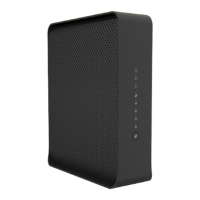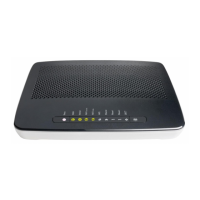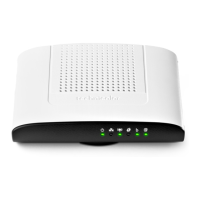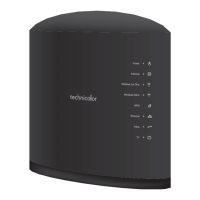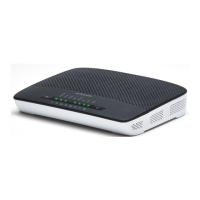3/6/2018 Proprietary and Confidential - Technicolor 92
Select the remote LAN user(s) behind the remote gateway who
can use this VPN tunnel. This may be a single IP address, a
sub-network, or any addresses. If Any is set, the gateway acts
as a responder and accepts requests from any remote user. Note
that the Remote Secure Group must match the remote gateway's
Local Secure Group.
Enter the IP address on the remote network.
If the Subnet option is selected, enter the mask to determine the
IP addresses on the remote network.
Select the desired option, IP Address.
Key Exchange Method:
The device supports both automatic and manual key
management. When automatic key management is selected,
Internet Key Exchange (IKE) protocols are used to negotiate key
material for Security Association (SA). If manual key management
is selected, no key negotiation is needed. Manual key
management is used in small static environments or for
troubleshooting purposes. Note that both sides must use the same
key management method.
Encryption Algorithm:
The Encryption method determines the length of the key used to
Encrypt/decrypt ESP packets. Note that both sides must use the
Same method.
Available Options are DES, 3DES, AES-128, AES-129, AES-256
Authentication Algorithm:
The Authentication method authenticates the Encapsulating
Security Payload (ESP) packets. Select MD5 or SHA. Note that
both sides (VPN Endpoints) must use the same method.
MD5: A one-way hashing algorithm that produces a 128--
bitdigests
SHA1: A one-way hashing algorithm that produces a 160-
bitdigests
Pre-Shared Key:
IKE uses the Pre-Shared Key to authenticate the remote IKE peer.
Both character and hexadecimal values are acceptable in this
field, e.g., My_@123 or 0x4d795f40313233. Note that both sides
must use the same Pre-Shared Key.
Key Lifetime:
This field specifies the lifetime of the IKE generated key. If the time
Expires, a new key will be renegotiated automatically. The Key

